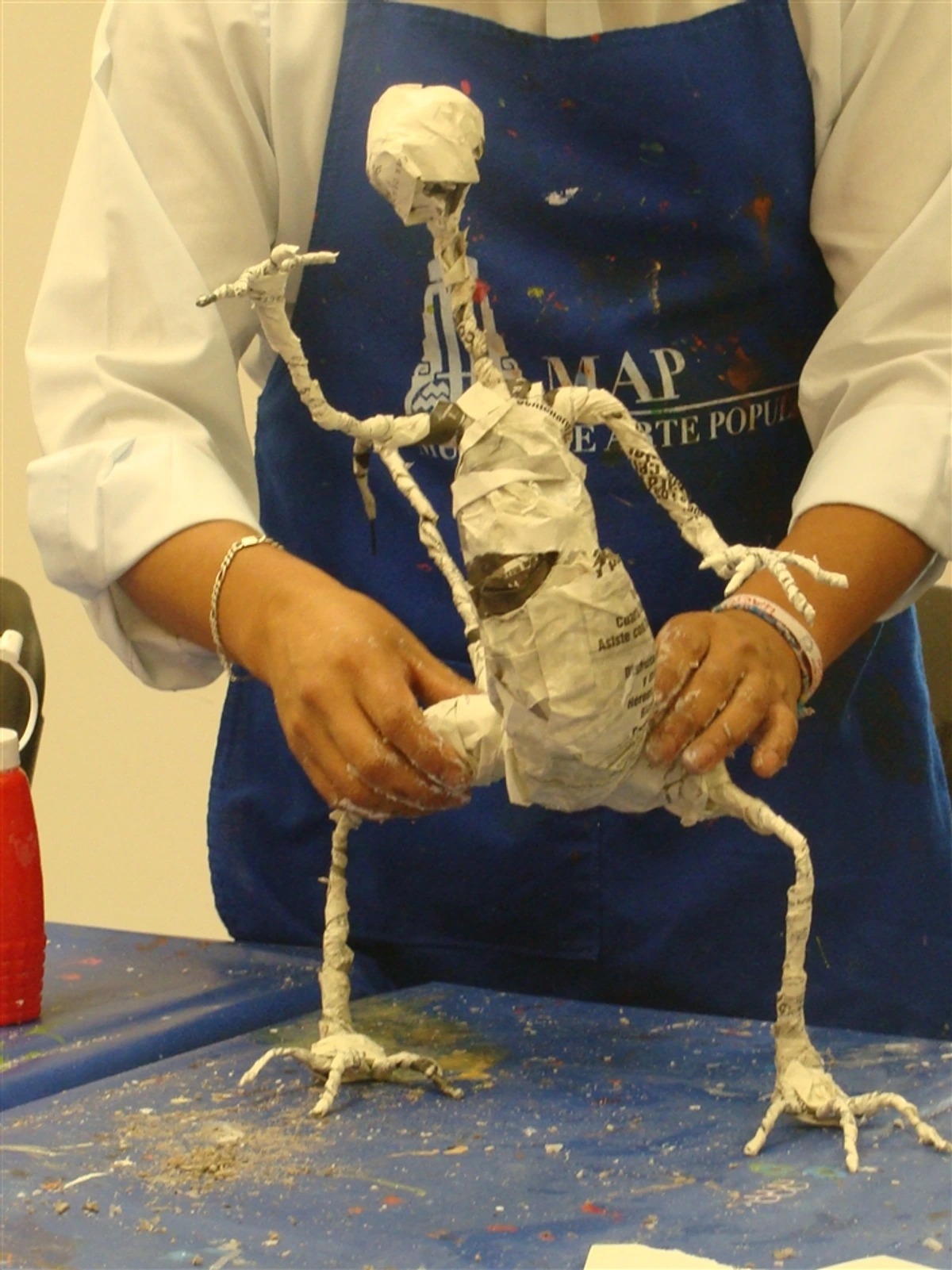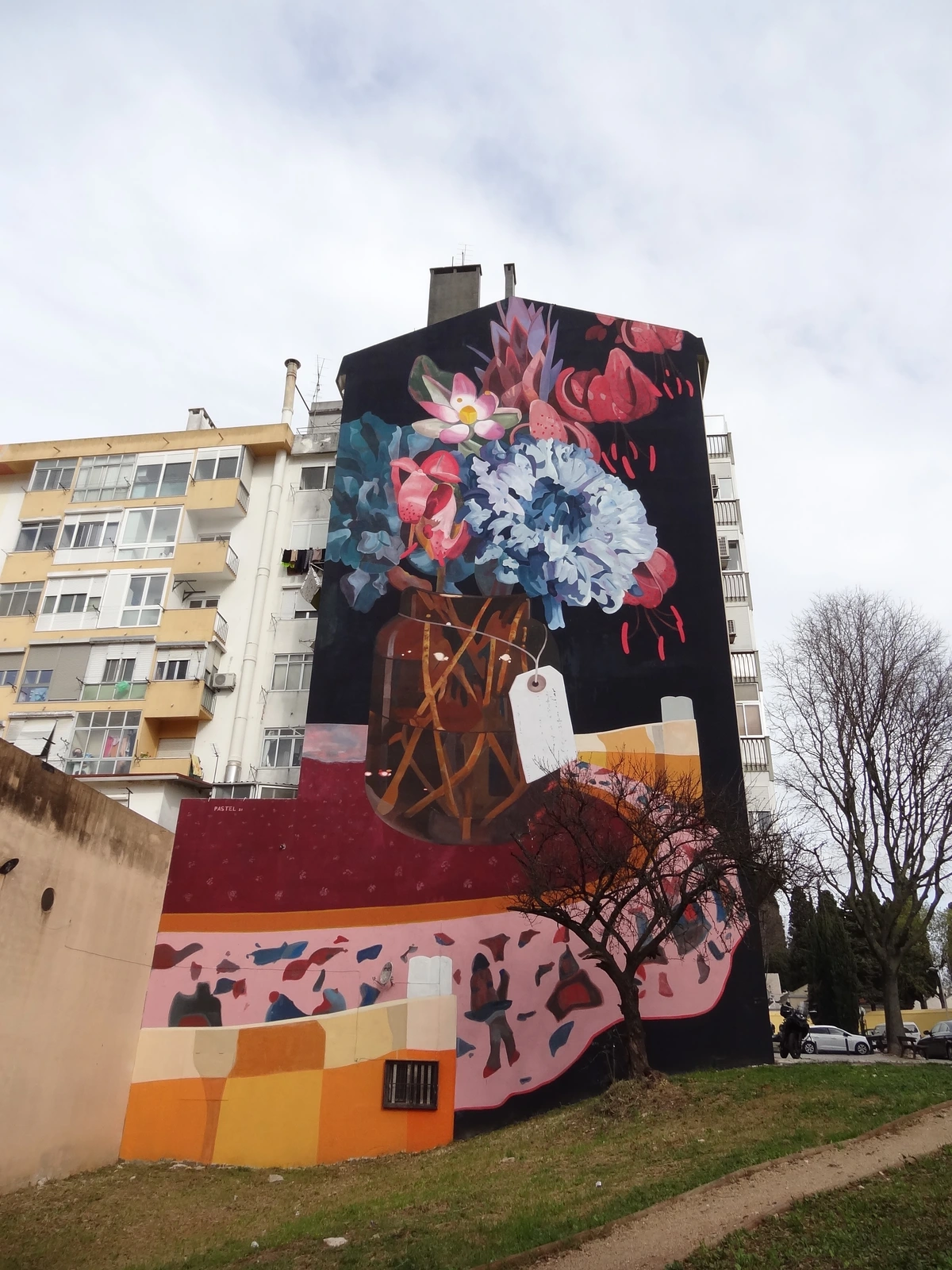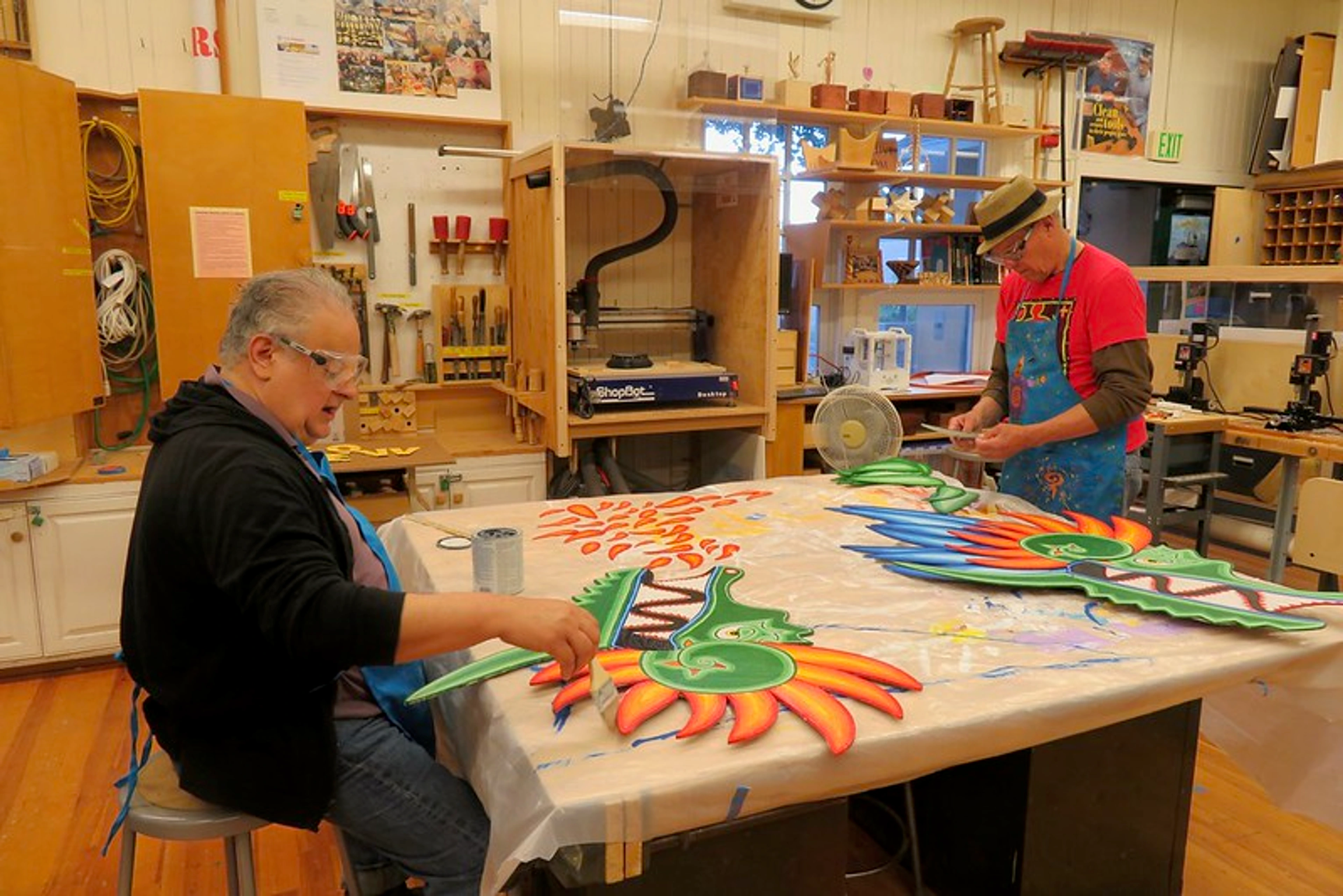
Unleash Your Artistic Voice: The Ultimate Guide to Starting an Art Vlog (and Why You Should)
Feeling unseen? This artist's guide reveals how to start an art vlog, connect deeply with your audience, showcase your unique creative process, and grow your art business, even if you're camera-shy. From gear to growth, we cover it all.
Unleash Your Artistic Voice: The Ultimate Guide to Starting an Art Vlog (and Why You Should)
Let's be honest: as artists, we pour our souls into our work. Whether it's the meticulous brushstrokes on a canvas, the careful shaping of clay, or the intricate layers of a digital piece, our art is deeply personal. But in today's digital landscape, a compelling image on its own often isn't enough to capture the full story. I've been there, scrolling through feeds, feeling like my work needed more than just a fleeting glance. We need to tell stories, build genuine connections, and let people in on the magic – or the messy, beautiful reality of our creative process.
That's where vlogging comes in. I know what you're thinking: "Me? On camera? Talking?" It feels a bit like stepping onto a stage without having rehearsed the monologue, right? Believe me, I wrestled with this for ages. My first few attempts felt incredibly awkward, like trying to have a serious conversation with a lamp. But here's the secret: it's less about being a polished performer and more about being genuinely, authentically you. It's about letting your audience peek behind the curtain, into the studio, and even into your brain – the slightly chaotic, wonderfully imaginative part, anyway. Imagine a potential collector seeing your passion during a studio tour, understanding the depth of your why i paint abstract: my personal philosophy and artistic vision, and feeling inspired to purchase your latest piece. If you're an artist looking to expand your reach, foster a deeper connection, and perhaps even sell more art, then a vlog might just be your next great masterpiece. This comprehensive guide will walk you through the mindset, essential gear, practical filming and editing steps, and long-term strategies to get your art vlog off the ground.
Why Even Bother Vlogging as an Artist?
I mean, we already have Instagram, right? And Facebook, and TikTok, and... it's a lot. And for quick hits, they're great. But a vlog, particularly on platforms like YouTube, offers something profoundly different. It's not just a snapshot; it's a narrative. It allows for depth, context, and a sense of connection that static images or short text snippets can't quite capture. Unlike fleeting TikToks or Instagram Reels, a well-produced vlog can live on for years, continuing to attract new viewers. It can even help you overcome creative blocks by articulating your process and ideas, almost like a visual journal of your artistic thoughts.

Building a Deeper Connection
For artists like myself, whose work often delves into the emotional resonance of my abstract art: how feelings guide my brushstrokes, while a painting speaks volumes, seeing the artist talk about those feelings, watching the brush move, or even witnessing the frustration when a piece isn't quite working – that's a whole different level of intimacy. It's like inviting someone into your personal creative space. This builds trust, fosters loyalty, and turns casual viewers into dedicated fans who feel invested in your journey.
Showcasing Your Process and Expertise
Ever wondered how an abstract painting comes to life? Or how I blend materials for my journey with mixed media: blending materials for abstract expression? A vlog is the perfect platform to demystify your art. You can show the unseen layers: my process of building depth and narrative in abstract mixed media, walk people through your thoughts on the psychology of color in abstract art: beyond basic hues, or even just share a quick how-to-abstract-art tip. For sculptors, this might mean showing the evolution from armature to finished form. For digital artists, a screen recording of your workflow can be invaluable. It positions you as an expert, and people absolutely love learning from the source – especially when that source is passionate.
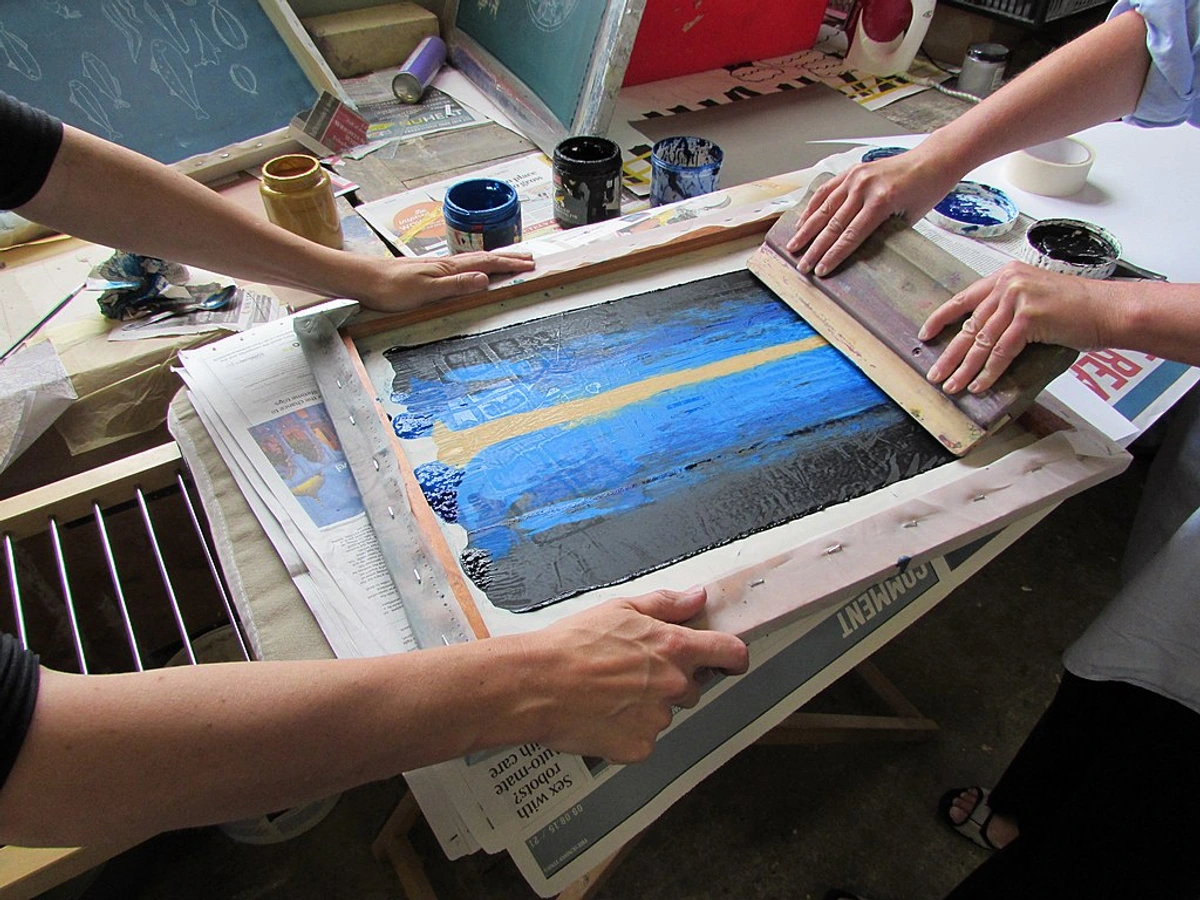
Expanding Your Reach and Audience
Let's be pragmatic for a moment. More eyes on your work means more potential collectors. A strong vlog presence can drive significant traffic to your website, introduce your unique style to a global audience, and even create opportunities for collaborations or exhibitions. Think of it as a living, breathing portfolio that never sleeps, constantly working to expand your visibility. The YouTube algorithm, in particular, can be a powerful discovery tool for new audiences interested in specific art forms or techniques.
The Technical Side: Essential Gear & Setup (Don't Overthink It!)
This is where many artists get stuck, convinced they need a Hollywood studio setup to create anything worthwhile. Wrong. You likely have everything you need to start, I promise. Remember, content and authenticity beat production value every single time, especially when you're just beginning.
How to Film an Art Vlog with a Smartphone (Minimum Viable Setup)
Seriously, your smartphone is a powerful tool. Pair it with good natural light and decent audio, and you're golden. Here's the absolute bare minimum to get started. I remember starting with just my old iPhone balanced precariously on a stack of art books!

credit, licence
- Smartphone: You almost certainly have one. Use it horizontally (landscape mode) for a professional look!
- Natural Light: Position yourself near a window. It's free, beautiful, and softens shadows. Avoid direct, harsh sunlight unless you know how to diffuse it.
- Built-in Mic/Headphones Mic: Start with what you have. If you have headphones with a mic (like AirPods or standard phone headphones), that's often better than the phone's built-in mic for isolating your voice and reducing echo.
- Something to Stabilize Your Phone: A stack of books, a tripod you already own for painting, a small box – anything to keep it steady and prevent shaky footage. Nobody wants seasick viewers.
Best Vlogging Gear for Artists on a Budget (Stepping Up Your Game)
When you're ready to invest a little, these upgrades make a significant difference in perceived quality and viewer comfort. Think of these as essential refinements rather than luxuries. My own journey involved slowly acquiring these pieces one by one, focusing on audio first, then lighting.
Item | Bare Bones (Starting Point!) | Stepping Up (Essential Upgrade) | Pro Level (Future Goal) | Cost Approximation |
|---|---|---|---|---|
| Camera | Smartphone | Mirrorless Camera (e.g., Sony ZV-1, Canon M50 – great for vlogging with flip-out screens and good autofocus) | DSLR/Cinema Camera (for superior depth of field, low-light performance, and manual control) | $, $$, $$$ |
| Lighting | Natural Window Light | LED Panel Light or Ring Light (for consistent, flattering illumination) | Professional photo studio lighting setup with Softboxes (for softer, more controlled, and highly customizable light) | $, $$ |
| Audio | Built-in Phone Mic / Headphone Mic | Lavalier Mic (wired/wireless – clips to your shirt, captures voice clearly, significantly reduces background noise) | Shotgun Mic (directional, great for studio or on-location) or Studio Condenser (for rich, broadcast-quality voiceovers) | $, $$, $$$ |
| Stabilization | Stack of books / DIY stand | Basic Tripod (essential for hands-free filming) / Gimbal (for smooth, cinematic moving shots) | Fluid Head Tripod (for professional, smooth camera movements) | $, $$, $$$ |
If you're wondering how to get your studio looking its best on camera, a great first step is to check out how to properly light your art studio. It's a game-changer not just for photography, but for video, too!
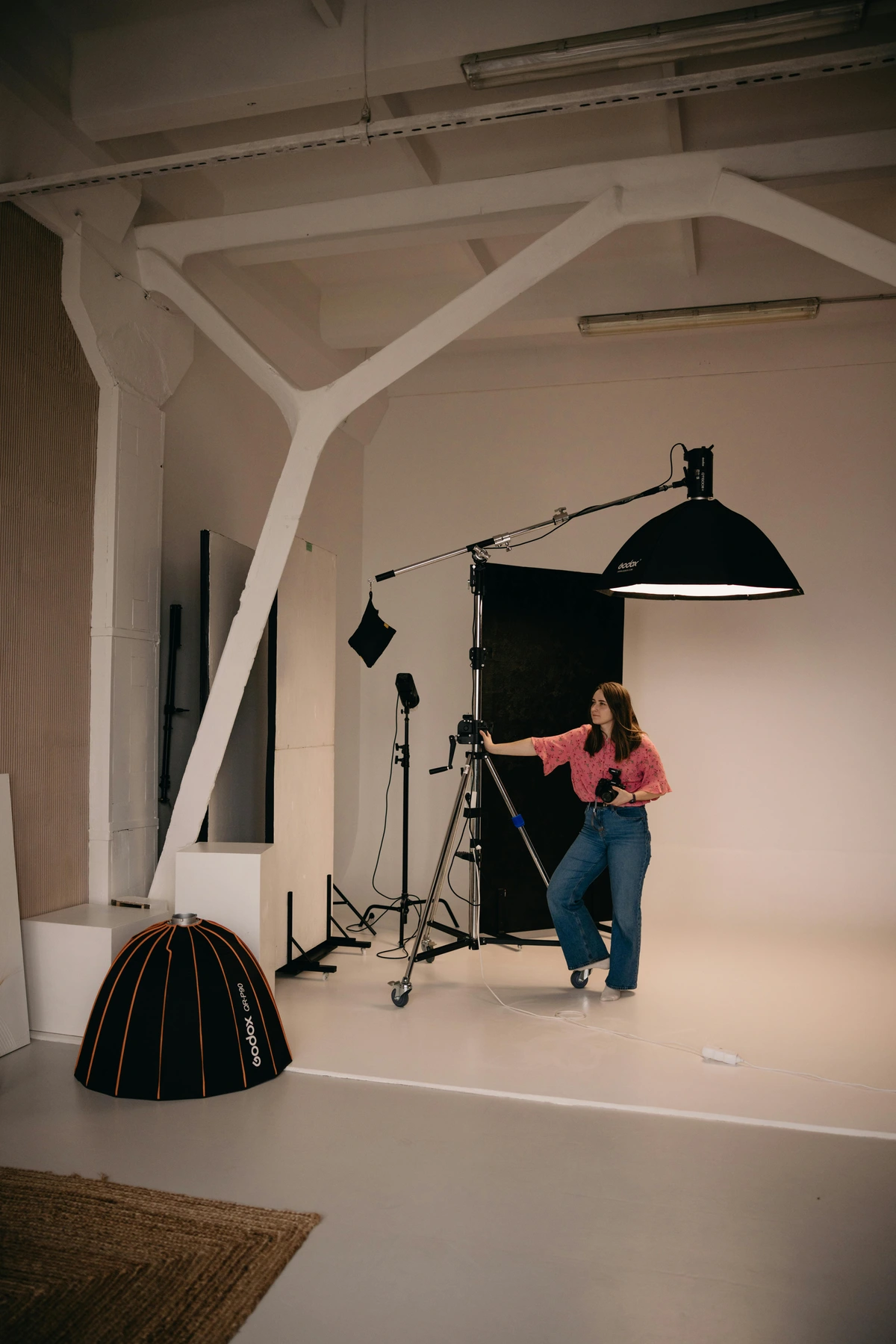
Finding Your Unique Artistic Voice on Camera (It's an Extension of Your Art!)
Once you understand the 'why' and have your basic gear, the next crucial step is to unlock your authentic voice on camera. This is perhaps the most personal and, honestly, the one I wrestle with the most. It's not about being someone you're not; it's about amplifying the artist within you that already exists. Think of your vlog as an extension of your canvas, another medium for your unique expression.

What's Your Story? (And How it Shapes Your Art)
Before you even think about hitting record, grab a pen and paper. Ask yourself: Why do I create? What drives my art? What message, if any, do I want to convey? How do specific life experiences, cultural influences, or philosophical underpinnings consistently appear in your work? Your answers form the bedrock of your vlog's identity. Maybe it's about finding my voice: the evolution of my abstract artistic style, or perhaps it's a broader discussion like the art of the artist statement: crafting your narrative. Be authentic, be personal. People connect with vulnerability, not perfection. Share those 'happy accidents' or moments of struggle; they're often the most relatable.
Content Ideas Beyond the Studio Tour
Yes, studio tours are great (and please do them regularly!), but don't stop there. The possibilities are truly endless, limited only by your imagination. Here's a little brainstorm for you, perhaps even linking the inspiration to specific series or iconic works:
- Process Videos: Time-lapses, step-by-step guides (e.g., "How I achieve this specific texture"), showing a new technique, or even how the unseen structure: how composition guides my abstract art comes together. Don't be afraid to show your problem-solving mid-painting!
- Q&A Sessions: Answer questions submitted by your audience (via comments, Instagram stories, or email). This is a fantastic way to build community and directly address their curiosity.
- Art Hauls/Reviews: Your favorite materials (like a guide to my favorite abstract painting tools), new discoveries, honest opinions on art supplies, or reviewing a new art book. Authenticity is key here.
- Behind-the-Scenes: Setting up for an exhibition, packaging orders, preparing canvases (how-to-stretch-a-canvas-for-painting), or even your morning coffee ritual if it feels relevant to your creative mindset. These glimpses into your 'real' artist life are gold.
- Inspiration Journeys: Visiting a museum (like maybe even the Uffizi gallery in Florence), a nature walk, or talking about a book that sparked an idea – detailing the research, travel, or observations that led to a specific series. How does that old architecture in Den Bosch influence your latest abstract cityscapes?
- Artist Life Insights: Discussing the business side of art (hello, my journey from studio to sale: navigating the business of abstract art as an artist), overcoming creative blocks (we all have them!), managing your time, or even the mental health aspects of being an artist. This offers immense relatability.
- Conceptual Deep Dives: Explore topics like why i paint abstract: my personal philosophy and artistic vision or the ultimate guide to abstract art movements: from early pioneers to contemporary trends. These establish your intellectual authority and offer educational value.
- Art Challenges/Tutorials: Participate in popular art challenges or create your own. Offer mini-tutorials (e.g., for watercolor painting) that encourage viewers to create alongside you.
Crafting Your Visual Narrative
Every video, even a short one, is a story. Think about its beginning (the hook, setting the stage), middle (the core content, the journey), and end (the conclusion, call to action). Use a mix of shots to keep things dynamic: wide shots for context (your studio, a full artwork), medium shots (you working), and tight close-ups for detail (brushstrokes, material textures). Good pacing, with moments of intense focus and moments of reflection, will keep your viewers engaged.
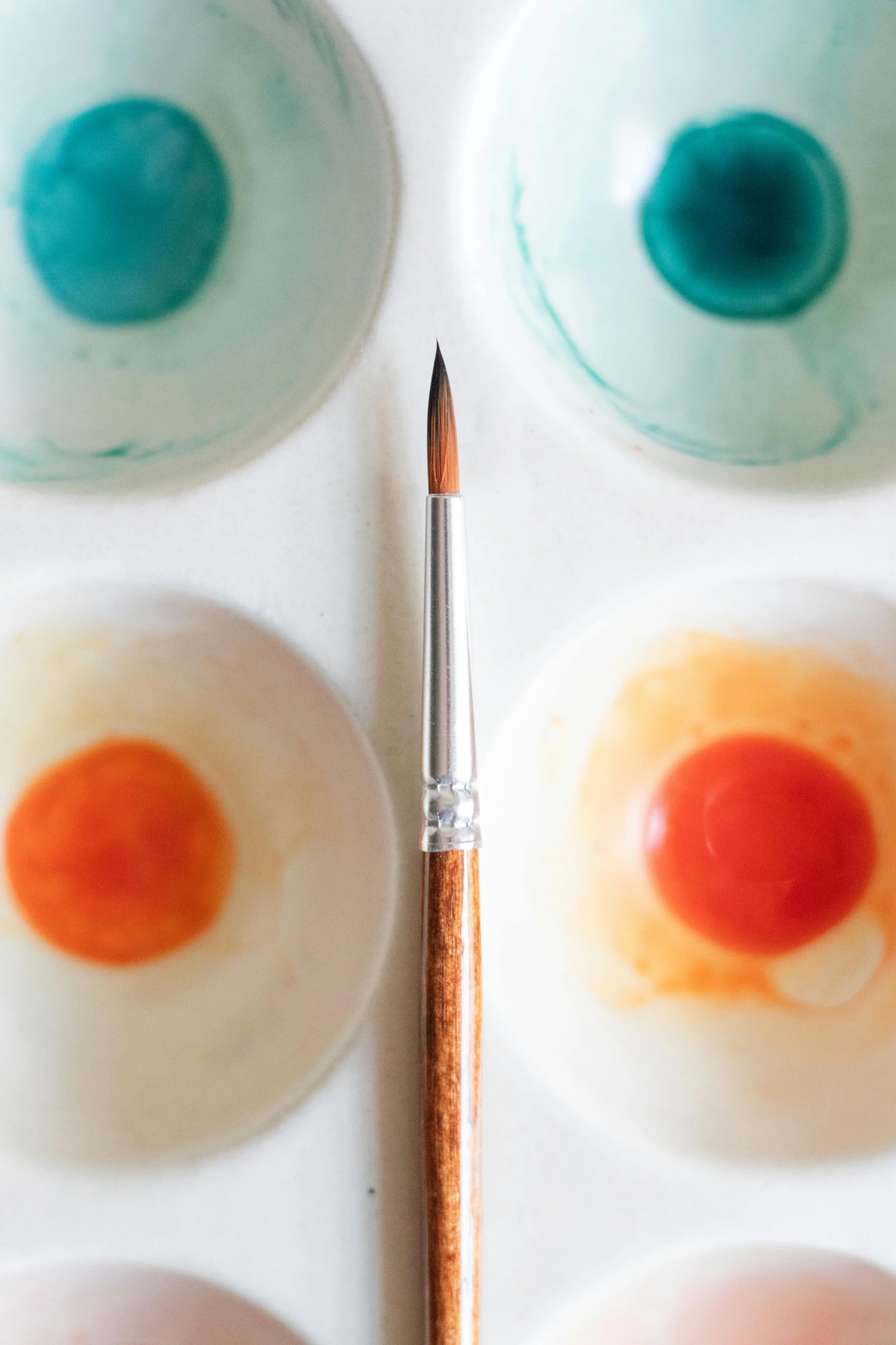
Lights, Camera, Action: Filming & Editing – It's All Storytelling
Once you have your gear (even if it's just your phone), it's time to actually make some content. This is where your inner storyteller shines. Remember, this isn't about rigid perfection; it's about sharing your authentic artistic journey.
Overcoming the Camera Fear
Okay, deep breaths. We've all been there. My first few videos were probably just me staring awkwardly at the lens, wondering if anyone would ever actually watch this. Here's a secret: no one cares if you're perfect. They care if you're genuine. Practice by talking to your phone camera like it's a friend. It gets easier, I promise. You can even start with voice-overs on process videos or time-lapses, gradually introducing your voice and then your face if that feels less intimidating. Remember, you're not acting; you're just sharing your passion.

Basic Filming Tips for Artists
- Composition: Frame yourself (and your art!) well. The rule of thirds is a good starting point (imagine a tic-tac-toe grid over your shot and place important elements along the lines or intersections). Make sure your background isn't too distracting – unless it's your wonderfully chaotic studio, then embrace it and make it part of your brand!
- Audio is King: People will forgive shaky video more easily than bad audio. Speak clearly, reduce background noise. If you have a noisy fan, turn it off. Close windows if there's street noise. These small efforts make a huge difference.
- Vary Your Shots: Don't just sit and talk. Show close-ups of your brushstrokes, wide shots of your studio, different angles of your artwork in progress. Varying camera angles and shot types keeps viewers engaged and helps tell your story visually.
- Lighting is Crucial: Use that natural window light! If you have additional lights, position them carefully to illuminate your face and your artwork without creating harsh shadows.
- Continuity: If you're filming over multiple sessions, be mindful of consistent background elements, lighting, or even your outfit to ensure a smooth viewer experience. This helps the video flow seamlessly.
Simple Editing with a Digital Tablet (Or Your Phone/Computer)
Editing might sound scary, but modern apps make it surprisingly accessible. A digital tablet can be incredibly useful for quick edits on the go due to intuitive touch controls and portability, allowing you to edit right from your studio or even your couch.
- Free Mobile & Desktop Apps: InShot, CapCut (great for mobile, fast edits), and DaVinci Resolve (desktop, incredibly powerful and free for robust editing) are excellent starting points. Many phones also have decent built-in editors.
- Basic Edits: Focus on trimming out pauses, removing mistakes, adding simple text overlays (for key terms or names), and perhaps some royalty-free background music. Remember to ensure you have the rights to any music you use to avoid copyright issues.
- Pacing & Flow: Think about how long each shot lasts. Keep things moving, but don't rush your explanations. The goal is to keep viewers engaged without feeling overwhelmed. YouTube generally favors a slightly more polished feel, while Instagram Reels and TikTok thrive on quick cuts and trending sounds.
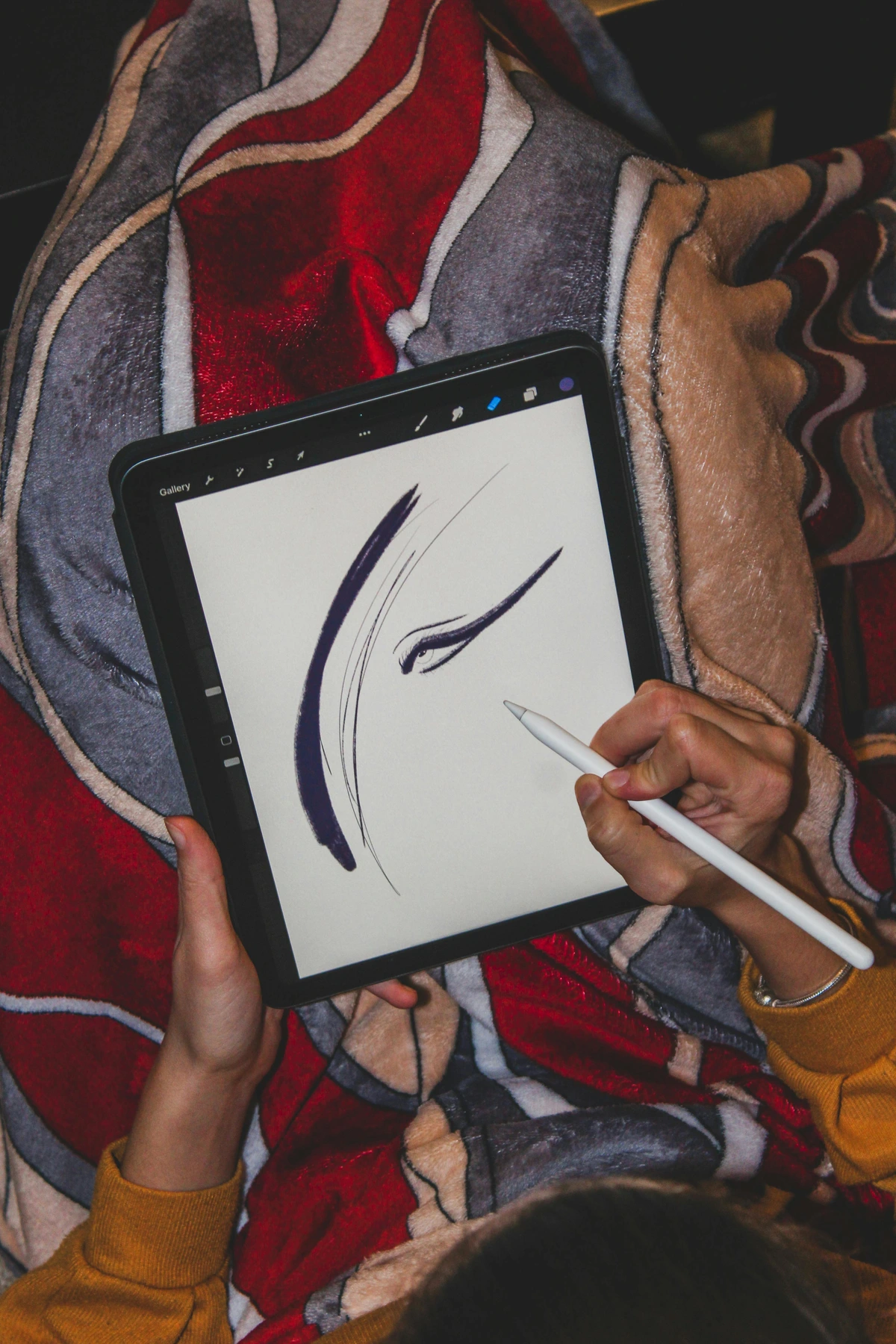
credit, licence
Building Your Community and Staying Consistent
A vlog isn't a one-and-done project; it's a relationship. And like any good relationship, it requires effort and consistency. The true magic happens when you start to genuinely connect with the people watching your videos.

credit, licence
Engaging with Your Audience
This is where the real connection happens. Don't just publish and disappear!
- Respond to Comments: Every single one, especially at the beginning. It shows you value their input. Even a quick "Thanks for watching!" or a thoughtful answer to a question can go a long way.
- Ask Questions: Encourage interaction within your videos. "What would you like to see next?" "What's your biggest creative challenge? Let me know in the comments!" This creates a two-way conversation.
- Go Live Occasionally: A live Q&A or a casual studio chat can be incredibly powerful for real-time connection. It shows the raw, unedited you and builds immense trust.
- Community Tab (YouTube): Use this feature to post updates, polls, and engage with your audience between video uploads.
The Power of Consistency
I'm a big believer in showing up, even when you don't feel like it. A consistent upload schedule (whether it's weekly, bi-weekly, or monthly) trains your audience to expect your content. But consistency goes beyond just timing; consistent visual branding (thumbnails, intro/outro style) and a consistent tone of voice also build a stronger, more recognizable channel. It also helps with the YouTube algorithm, which, let's be honest, can be a bit of a mystery sometimes. Don't burn yourself out trying to upload daily; find a rhythm that works for you and your artistic practice. Remember, slow and steady wins the race.

credit, licence
Promoting Your Vlog & SEO Tips
Don't just upload and hope! Share your videos on all your other social media platforms (Instagram, Facebook, Twitter, Pinterest). Embed them on your artist website. Talk about them in your newsletter. Think of it as a multi-pronged attack on obscurity.
For discoverability on YouTube, consider these Vlog SEO tips:
- Keyword-Rich Titles: Use keywords relevant to your video's content (e.g., "Abstract Painting Tutorial: Blending Acrylics for Beginners").
- Detailed Descriptions: Write a thorough description (200-500 words) using relevant keywords, linking to other videos, your website, and social media. Think of it as a mini-blog post for your video.
- Relevant Tags: Use a mix of broad and specific tags to help YouTube understand your content.
- Engaging Thumbnails: Design custom, eye-catching thumbnails that accurately represent your video and make viewers want to click.
- Subtitles/Closed Captions: These improve accessibility and provide more text for search engines to crawl.
- End Screens & Cards: Use these within YouTube to link to other videos, playlists, or your website, keeping viewers on your channel longer.
Monetization: Turning Views into Value (Yes, You Can!)
While the primary goal might be community and exposure, there's absolutely nothing wrong with turning your passion into profit. It allows you to continue creating, after all!

credit, licence
- Direct Art Sales: This is often the most straightforward for artists. Integrate links to buy your artworks directly in your video descriptions and mention them naturally in your videos. Use calls to action like "Link in description to see this piece" or "Comment below if you're interested in prints." Show the finished piece prominently!
- Sponsorships & Brand Deals: As your audience grows, brands might approach you for collaborations (e.g., art supply companies, art platforms). Only work with brands you genuinely believe in and whose products you use. Always be transparent about sponsored content.
- Ad Revenue: This usually kicks in once you hit certain subscriber and watch-time thresholds (e.g., YouTube's Partner Program). It's often a slow burn, but it can add up over time and provides a steady baseline income.
- Patreon/Memberships: Offer exclusive content or early access to loyal fans. This could include bonus tutorials, studio vlogs, behind-the-scenes content, monthly art challenges, or downloadable resources. It's a fantastic way to build a community of dedicated patrons.
- Selling Courses/Workshops: Once you've established your expertise, you can create and sell online art courses or host virtual workshops. Your vlog acts as a perfect promotional tool, showcasing your teaching style and skill.
- Affiliate Marketing: Recommend art supplies or books you love and include affiliate links in your description. You earn a small commission when viewers purchase through your links, without any extra cost to them.
Legal & Ethical Considerations (The Boring but Important Stuff)
- Copyright: Be mindful of using copyrighted music, images, or footage without permission. Always opt for royalty-free music or music you've licensed. If you're inspired by another artist, attribute them clearly.
- Disclosure: Always clearly disclose if a video is sponsored or contains affiliate links, as required by law and ethical best practices. Authenticity includes transparency!
- Privacy: Be respectful of the privacy of others if they appear in your videos, especially if you're filming in public spaces or with collaborators. Always ask for consent.
FAQ: Your Vlogging Journey Answered

Q1: How do I overcome the fear of talking on camera as an artist?
A: Most people aren't natural performers at first! Start by outlining your points, practicing in front of a mirror, or just talking to your phone camera without recording. Focus on being genuine, not perfect. You can also start with voice-overs on process videos or time-lapses, gradually introducing your voice and then your face if that feels less intimidating. Remember, your audience wants to connect with you.
Q2: What's the best platform for an artist vlog?
A: YouTube is generally the gold standard for long-form video content and discoverability. It's where most people go specifically to learn or be entertained by video. You can then repurpose shorter clips or highlights for platforms like Instagram Reels or TikTok to drive traffic back to your main YouTube channel.
Q3: How long should my art vlog videos be?
A: It varies! For tutorials or studio vlogs, 10-20 minutes is common on YouTube, allowing for depth. For quick tips, 2-5 minutes works. Consider your audience's attention span and the complexity of the topic. Shorter, punchier videos work well for social media clips, while longer videos allow for deeper dives into specific techniques or artist insights. The most important thing is to keep it engaging and deliver value throughout. Don't drag it out just to hit a number.
Q4: How often should I upload new art vlog content?
A: Consistency beats frequency. Whether it's weekly, bi-weekly, or monthly, pick a schedule you can realistically stick to without burning out. Your audience will appreciate reliability, and consistency signals to the algorithm that you're an active creator. It's better to produce high-quality content less often than rushed, low-quality content frequently.
Q5: Do I need a fancy camera and lighting to start my art vlog?
A: Absolutely not to start! Your smartphone, natural light, and a clean audio source (like your headphone mic) are more than enough for your first few videos. You can always upgrade as you grow, learn what your specific needs are, and as your channel potentially starts generating income.
Q6: How do I deal with negative comments or criticism on my art vlog?
A: It's tough, but inevitable online. The best approach is to distinguish between constructive criticism (which can help you grow) and negativity (which you can largely ignore). Respond professionally and thoughtfully to valid points, and remember that not every comment requires a response. Focus on your community and the positive interactions. Developing a thick skin is part of the journey.
Q7: What kind of art is best suited for vlogging?
A: Any visual art form can be vlogged effectively! While painting is popular, sculptors can show their material manipulation, photographers their shoots and editing, digital artists their screen-recorded processes, illustrators their sketchbooks, and textile artists their intricate techniques. The key is to show the process and the passion, regardless of the medium.
Ready to Press Record?
Starting a vlog as an artist might feel like adding yet another hat to your already overflowing collection (artist, marketer, accountant, sometimes therapist...). But this is one hat that can genuinely amplify your voice, connect you with kindred spirits, and open up new avenues for your art. I've found it incredibly rewarding, even with its challenges.
Don't wait for perfection, because let's face it, perfection is a myth, especially in the art world. Start with what you have, embrace the learning curve, and most importantly, share your unique artistic spark with the world. I'm genuinely excited to see what you create. Now go forth and vlog!
